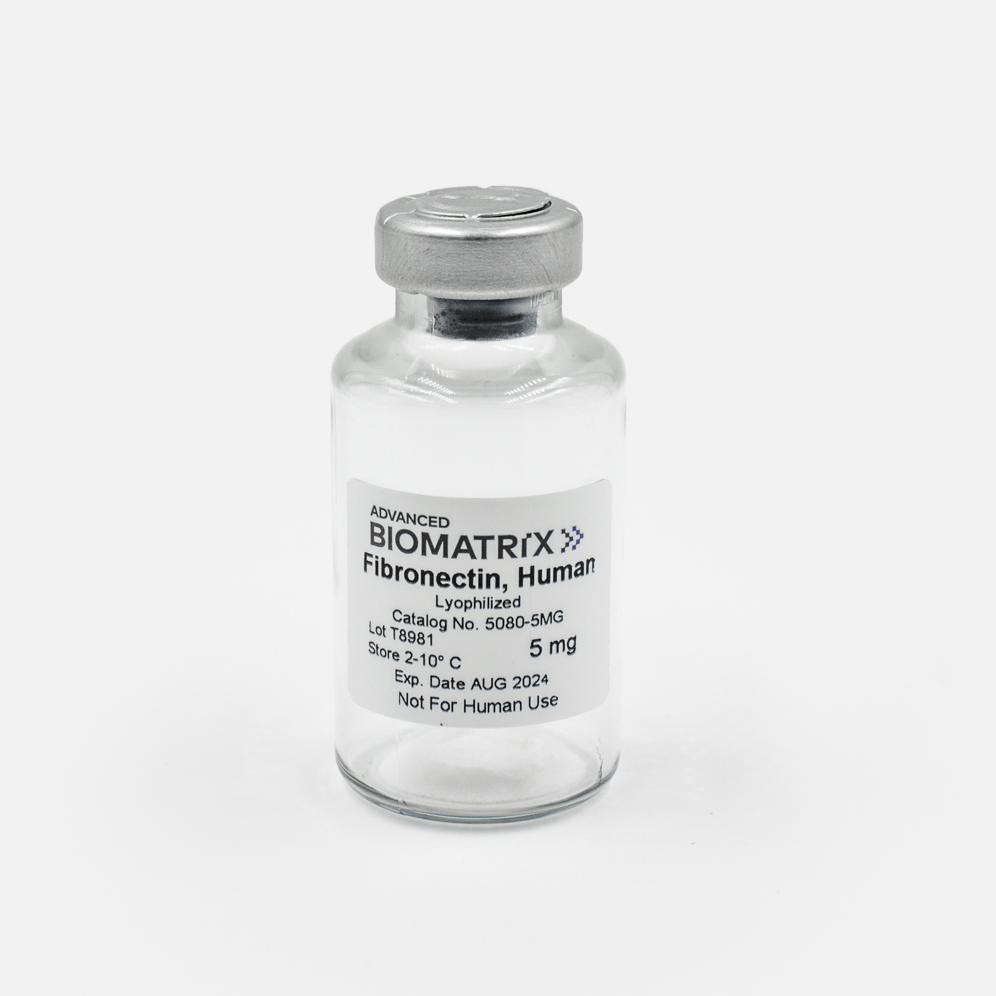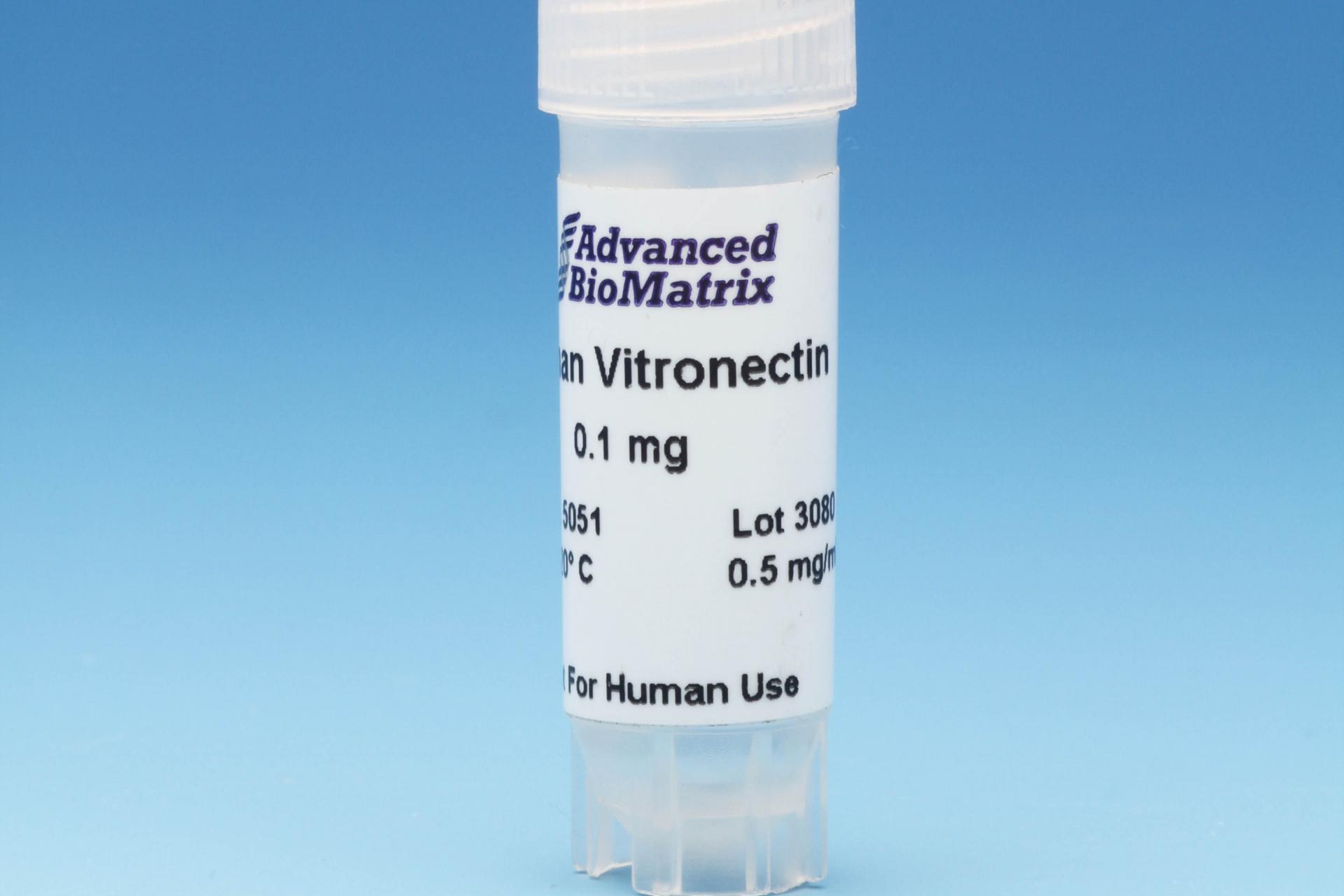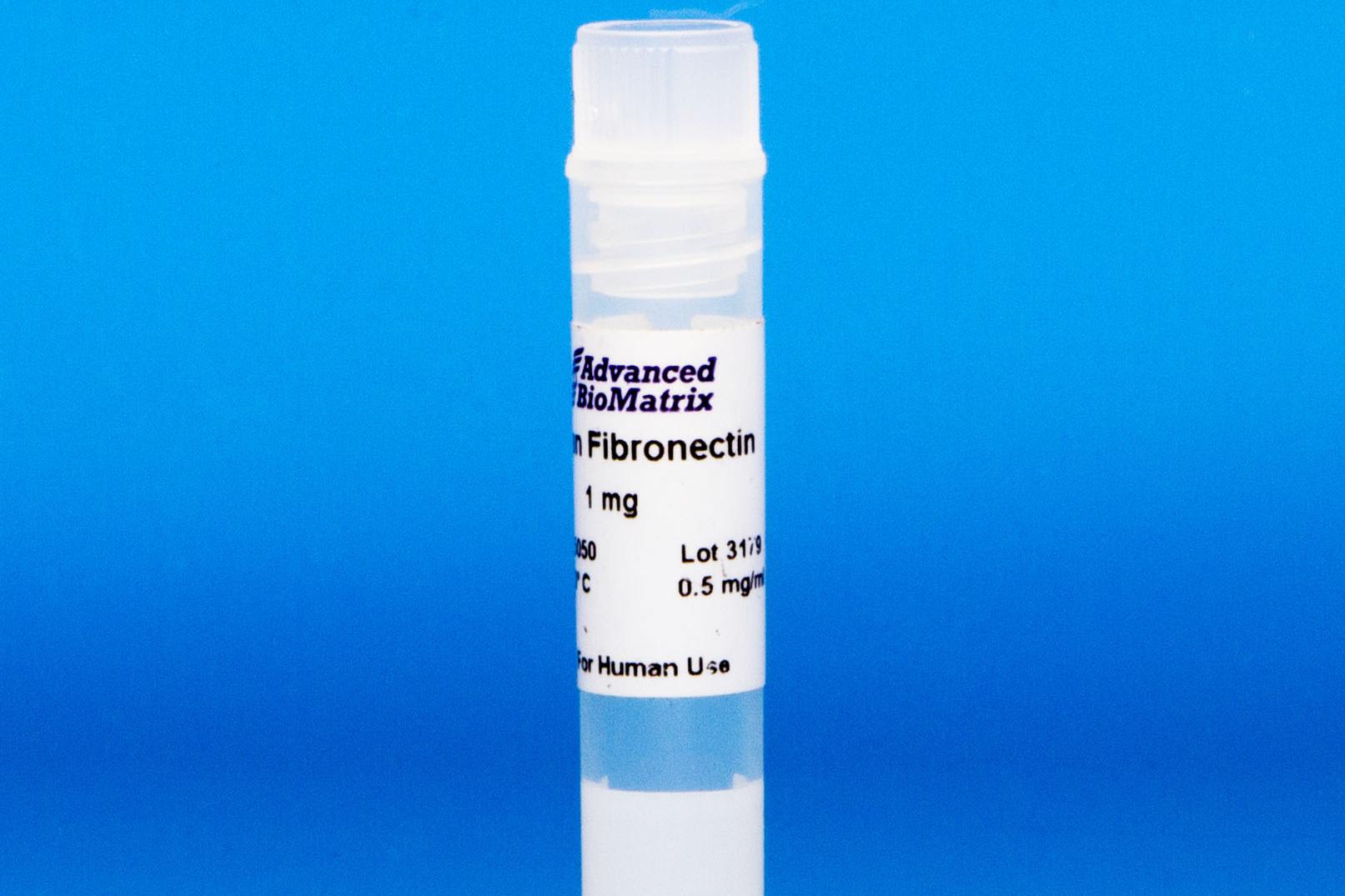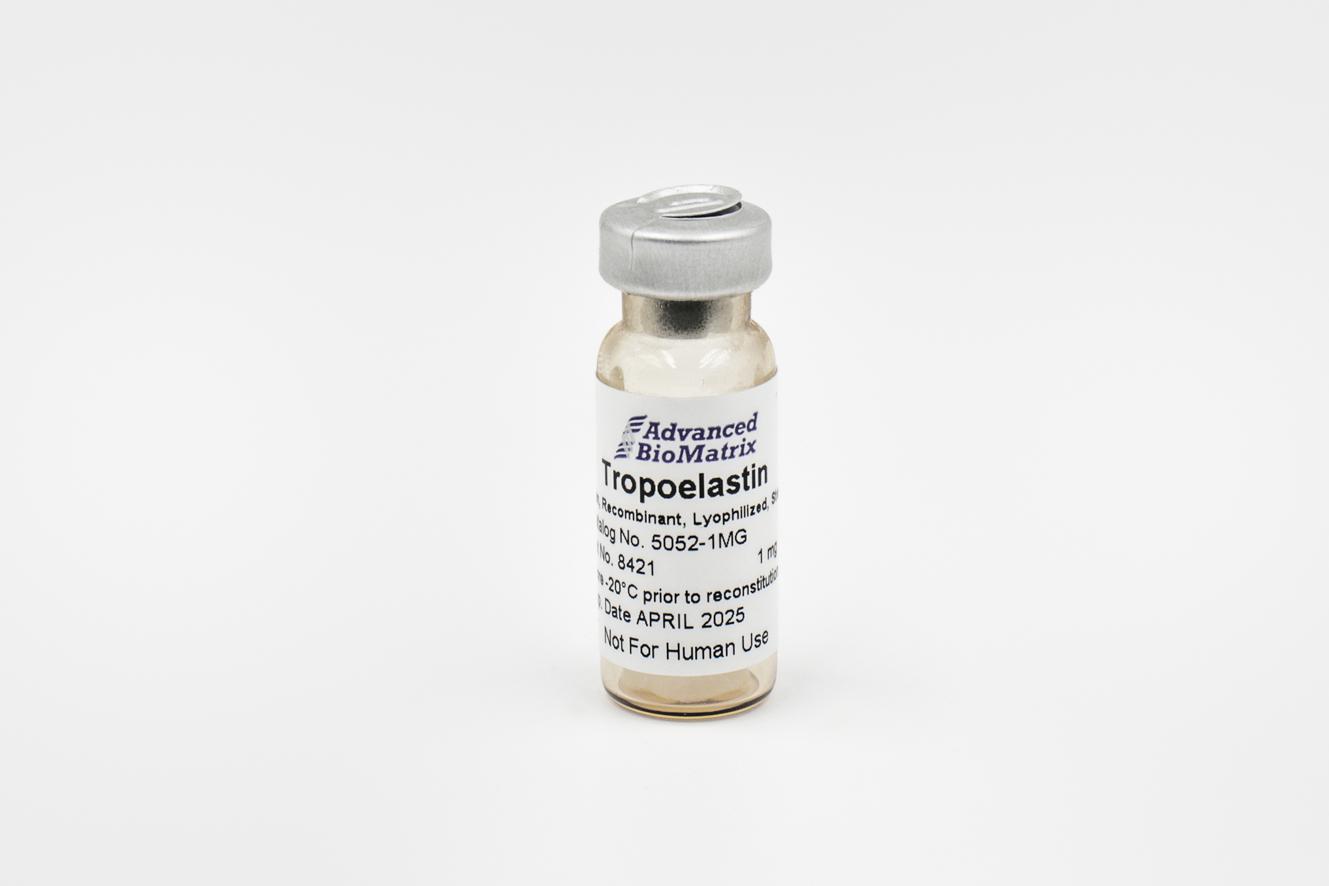-
Collagen
-
Type I - Atelocollagen
- PureCol® Solution, 3 mg/ml (bovine) #5005
- Nutragen® Solution, 6 mg/ml (bovine) #5010
- FibriCol® Solution, 10 mg/ml (bovine) #5133
- PureCol® EZ Gel, Solution, 5 mg/ml (bovine) #5074
- PureCol® Lyophilized, 15 mg (bovine) #5006
- VitroCol® Solution, 3 mg/ml (human) #5007
- VitroCol® Lyophilized, 15 mg (human) #5008
-
Type I - Telocollagen
- TeloCol®-3 Solution, 3 mg/ml (bovine) #5026
- TeloCol®-6 Solution, 6 mg/ml (bovine) #5225
- TeloCol®-10 Solution, 10 mg/ml (bovine) #5226
- RatCol™ for 2D and 3D, Solution, 4 mg/ml (rat) #5153
- RatCol™ High Concentration, Solution, 10 mg/ml (rat)
- RatCol™ lyophilized, 100 mg (rat)
- RatCol™ for Coatings, Solution, 4 mg/ml (rat) #5056
- Type I - Insoluble Collagen
- Type I - Bioinks
- Type II Collagen
- Type III Collagen
- Type IV Collagen
- Collagen Standard
-
PureCol® Collagen Coated Plates
- Collagen Coated T-25 Flasks #5029
- Collagen Coated 6-well Plates #5073
- Collagen Coated 12-well Plates #5439
- Collagen Coated 24-well Plates #5440
- Collagen Coated 48-well Plates #5181
- Collagen Coated 96-well Plates #5072
- Collagen Coated 384-well Plates #5380-5EA
- Collagen Coated 100 x 20 mm Dishes #5028
- MatTek Glass-Bottom Dishes
- MatTek Multi-Well Plates
- Collagen Scaffolds
- Collagen Hybridizing Peptides
-
Type I - Atelocollagen
- Tunable Stiffness
- CytoSoft™ Rigidity Plates
-
Bioprinting
- Support Slurry for FRESH Bioprinting
-
Bioinks for Extrusion Bioprinting
- Lifeink® 200 Collagen Bioink (35 mg/ml) #5278
- Lifeink® 220 Collagen Bioink (70 mg/ml) #5343
- Lifeink® 240 Acidic Collagen Bioink (35 mg/ml) #5267
- Lifeink® 260 Acidic Collagen Bioink (70 mg/ml) #5358
- GelMA Bioink
- GelMA A Bioink
- GelMA C Bioink
- Pluronic F-127 40% Sterile Solution
- GelMA 20% Sterile Solution
- Alginate 5% Sterile Solution
- Photoinitiators
- Bioinks for BIONOVA X
- Bioinks for Lumen X
- DLP Printing Consumables
-
Create Your Own Bioinks
- PhotoCol® Methacrylated Collagen
- PhotoGel® Methacrylated Gelatin 95% DS
- PhotoGel® Methacrylated Gelatin 50% DS
- PhotoHA®-Stiff Methacrylated Hyaluronic Acid
- PhotoHA®-Soft Methacrylated Hyaluronic Acid
- PhotoAlginate® Methacrylated Alginate
- PhotoDextran® Methacrylated Dextran
- PEGDA (Various Molecular Weights)
- Silk Fibroin, Solution
- PhotoSericin® Methacrylated Sericin
- Bioprinters
-
3D Hydrogels
- Thermoreversible Hydrogel
- Silk Fibroin
-
Type I Collagen for 3D Hydrogels
- PureCol® Solution, 3 mg/ml (bovine) #5005
- Nutragen® Solution, 6 mg/ml (bovine) #5010
- FibriCol® Solution, 10 mg/ml (bovine) #5133
- PureCol® EZ Gel, Solution, 5 mg/ml (bovine) #5074
- VitroCol® Solution, 3 mg/ml (human) #5007
- TeloCol®-3 Solution, 3 mg/ml (bovine) #5026
- TeloCol®-6 Solution, 6 mg/ml (bovine) #5225
- TeloCol®-10 Solution, 10 mg/ml (bovine) #5226
- RatCol® for 3D gels, Solution, 4 mg/ml (rat) #5153
- HyStem® Thiolated Hyaluronic Acid
- Methacrylated Collagen
- Methacrylated Gelatin
- Methacrylated Hyaluronic Acid
- Diacrylates
- Collagen Sponges
- Methacrylated Polysaccharides
- Spheroids and Organoids
- Extracellular Matrices
- HyStem / Hyaluronic Acid
-
Adhesion Peptides / Proteins
-
Recombinant Adhesion Proteins
- CD2, 0.5 mg/ml #5086
- CDH3, 0.5 mg/ml #5124
- CDH13, 0.5 mg/ml #5125
- CD14, 0.5 mg/ml #5089
- CDH18, 0.5 mg/ml #5090
- CD40, 0.5 mg/ml #5093
- CD86, 0.5 mg/ml #5096
- CD164, 0.5 mg/ml #5100
- CD270, 0.5 mg/ml #5127
- CD274, 0.5 mg/ml #5126
- CD276, 0.5 mg/ml #5123
- E-Cadherin (CD324), 0.5 mg/ml #5085
- ICAM2, 0.5 mg/ml #5107
- Adhesion Peptides
- Collagen Hybridizing Peptides
-
Recombinant Adhesion Proteins
- Reagents
- Assays
Fibronectin
Lyophilized (Human)
Catalog #5080
Fibronectin
Lyophilized (Human)
Catalog #5080
This lyophilized fibronectin has been purified from human plasma where it is found as a dimer and has a size of 440-500 kDa with two similar subunits (220-250 kDa ) linked by two disulfide bonds. Fibronectin’s primary function is related to cell adhesion and attachment to extracellular matrix.
Product Description
Fibronectin is a widely used broad range natural cell attachment factor. This product has been purified from human plasma where it is found as a dimer and has a size of 440-500 kDa with two similar subunits (220-250 kDa ) linked by two disulfide bonds.
Fibronectin’s primary function is related to cell adhesion and attachment to extracellular matrix. Certain domains of Fibronectin have been found to play important roles that involve interactions with collagen, heparin and other cell surface glycosaminoglycans (GAGs).
Fibronectin is ideal for coating of surfaces and is typically used at a concentration of 1-5 µg/cm2 . It is provided in user-friendly packaging for use and storage. Fibronectin is sterile filtered and is supplied as a sterile, lyophilized product.
| Parameter, Testing, and Method | Fibronectin #5080 |
| Form | Lyophilized Powder |
| Package Size | 5 mg |
| Sterilization Method | Filtration |
| Purity - HPLC | >95% |
| Formulation | 1.12 mg glycine and 0.056 mg sodium chloride per mg of fibronectin |
| Source | Human, Plasma |
| Storage Temperature | 2 to 10°C prior to reconstitution and -20°C after reconstitution |
| Shelf Life | Minimum of 6 months from date of receipt |
| Shelf Life after Reconstitution | 3 months |
| Safety | Source material found negative for infectious agents |
Directions for Use
Recommended Volumes for 2D Coatings or 3D Hydrogels
Download the full PDF version or continue reading below:
Coating Procedure:
Use these recommendations as guidelines to determine the optimal coating conditions for your culture system.
- Add 5 ml of sterile water to yield a concentration of 1 mg/ml.
- Incubate for 30-60 minutes at 37°C to dissolve. Do not agitate.
Note: Upon reconstitution, the solution may contain a small amount of insoluble aggregated material. This phenomenon is inherent to fibronectin and does not affect product performance. - Further dilute the 1 mg/ml solution with PBS or cell culture medium to achieve desired working concentration.
- For coating of cell culture plasticware, 5 µg/cm2 is typical.
- Incubate for approximately 45 minutes at 15 to 25°C.
- Aspirate remaining material being careful to not touch the coated surface.
- It is possible, but not necessary, to rinse the coated surface with PBS or medium.
- Plates are ready for use. The coated culture vessels should be used immediately and should not be allowed to dry.
Product Q & A
440 kDa. The protein is a dimer of two 220 kDa identical subunits. It shows up as 220 kDa on a reduced gel, and 440 kDa on a non-reduced gel.
The fibronectin (Cat. No. 5080-5MG) is prepared in a glycine/NaCl buffer and when the lyophilized pellet is reconstituted with sterile water at a 1 mg/ml concentration the resulting pH is neutral (~7.4-7.6).
Fibronectin has two nearly identical molecules that are linked together in a dimer configuration. Each of those molecules has one RGD site: https://doi.org/10.1002/iub.493
Product Applications
Matrigel Alternatives for Neuronal Assays
Matrigel Alternatives for Migration and Wound Healing Assays
Product References
References for Fibronectin:
Alhussein, Ghada, et al. "A spatiotemporal characterization method for the dynamic cytoskeleton." Cytoskeleton 73.5 (2016): 221-232.
Pezzoli, Daniele, et al. "Fibronectin promotes elastin deposition, elasticity and mechanical strength in cellularised collagen-based scaffolds." Biomaterials 180 (2018): 130-142.
Wiley, Luke A., et al. "Generation of xeno‐free, cGMP‐compliant patient‐specific iPSCs from skin biopsy." Current protocols in stem cell biology 42.1 (2017): 4A-12.
Wiley, Luke A., et al. "Using patient-specific induced pluripotent stem cells and wild-type mice to develop a gene augmentation-based strategy to treat CLN3-associated retinal degeneration." Human gene therapy 27.10 (2016): 835-846.
Worthington, Kristan S., et al. "Two-photon polymerization for production of human iPSC-derived retinal cell grafts." Acta biomaterialia 55 (2017): 385-395.
Li, Ling, Mizuho Fukunaga-Kalabis, and Meenhard Herlyn. "Isolation and cultivation of dermal stem cells that differentiate into functional epidermal melanocytes." Human Cell Culture Protocols. Humana Press, 2012. 15-29.
Boularaoui, Selwa Mokhtar, et al. "Efficient transdifferentiation of human dermal fibroblasts into skeletal muscle." Journal of tissue engineering and regenerative medicine 12.2 (2018): e918-e936.
Product Certificate of Analysis
No result for .
Product Disclaimer
This product is for R&D use only and is not intended for human or other uses. Please consult the Material Safety Data Sheet for information regarding hazards and safe handling practices.







